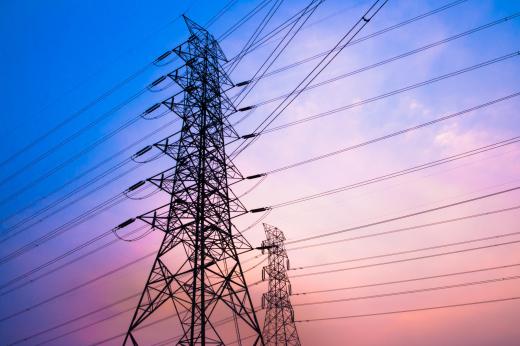Electrical properties are the physical conditions that allow an electrical charge to move from atom to atom in a specific material. These properties differ greatly between the three major types of materials: solids, liquids and gases. Electric properties of solid materials like metal are high, while electric charges do not move as easily in water and have an even more difficult time with gases. In each element, there are exceptions: some solids are poor conductors, and some gases can become excellent conductors.
Solids and electricity often are a perfect combination for conductivity. The electrical properties of copper, steel, and other metals provide the optimum opportunity because of the physical closeness of atoms. When electrons can pass easily between atoms, this promotes electrical conductivity. Solids like silver, copper and aluminum are popular with electrical work because very little energy is lost when electricity travels through these metals.

Not all solids, however, possess the strong electrical properties of metal. Items like glass, wood and plastic are considered insulators because the tightly packed electrons do not share electrical charges easily. When an electrical current is introduced to these materials, nothing happens. These solids are still valued in electrical work, but often to protect humans against electrical charges.

The electrical properties found in liquids vary depending on the material. Salt water, for example, has properties that allow for excellent conductivity of electricity because the ions in salt promote a free flow of electricity. Even though electricity can pass through regular water, drinking and distilled waters are considered insulators because of the poor flow of electricity. Other liquids, like oil, gasoline and kerosene contain even better insulating properties because electricity has a difficult time passing through.
The electrical properties of gases fluctuate most of all among the three basic materials. In a normal state, gases like oxygen, carbon dioxide and nitrogen are such poor conductors of electricity they are actually considered non-conductors. If these gases are exposed to different elements, however, properties quickly change. For example, when barometric pressure drops, like with an electrical storm, gases become a better conductor of electricity. The pressure creates a more dense atmosphere and allows for electricity, often in the form of lightning, to move more freely.
